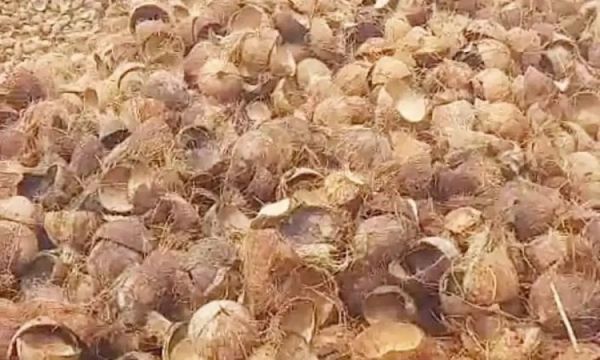
In a remarkable development, the cost of coconut shell has increased dramatically, with prices as high as Rs26,500 per ton. Compared to prior years, when prices ranged from Rs7,000 to Rs8,000 a ton, this is a huge increase. Prices had risen to Rs18,000 a ton only two years before, which at the time was regarded as a record. The present numbers, however, have exceeded all projections and established a new standard for the industry.

The severe lack of shell on the market is the main cause of this price increase. Shell output has dropped as a consequence of farmers shifting their attention to selling coconuts and tender coconuts after realizing the favorable selling prices. For firms that rely on this essential raw resource, the scarcity has created a difficult scenario.
“We have seen a fourfold increase in prices in just one year,” said market trader Somasekhar. Shell is becoming more and more in demand, and its price will probably increase more in the days ahead.
In addition to local demands, Tamil Nadu and Kerala, where coconut production is also common, have a sizable market for shell in Karnataka. The demand for Karnataka’s shell is rising as a result of these nearby states’ recent decline in coir output. Notably, Karnataka-produced shell has a carbon concentration of 85% to 95%, which is greater than the 80% found in coir from other states. As a result, it fetches higher pricing on the market.
Due to the growing demand, a local campaign that promotes “Bring in coconut shell and earn money” has gained support in the region.
Furthermore, locally acquired shell is processed into shell goods before being sent to Tamil Nadu and Keralan manufacturers. Additionally, manufacturers in Gujarat and Rajasthan are increasing their demand. Before being packed for shipment, the shell is carefully cleaned, dried, and sized at the manufacturers.
In the carbon manufacturing industry, coconut shell is becoming more and more useful. It is used to make water-based paints, face creams, and cosmetics, among other things.
Farmers and dealers alike are hopeful about the financial possibilities of this market as coconut shell prices continue to grow, suggesting a substantial change in regional farming methods and marketing tactics. The trajectory of the coconut shell business will be continuously monitored as it adjusts to shifting production problems and demand dynamics.